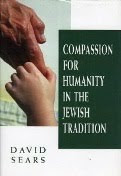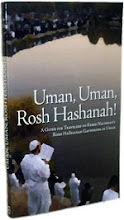(c) Dovid Sears
Letting in the Light, Part II
Likutey Moharan I, 172
Dovid Sears
In Part I we discussed the Rebbe’s
teaching on going beyond the ego, particularly through hisbodedus. Here we will explore some
of its implications in terms of tzedakah and the mitzvos, citing
a section of Reb Noson’s Likutey Halakhos and a mystical insight from
Rav Kook.
The Art of Giving
Reb Noson uncovers still another
dimension of this lesson's meaning by relating the negation of the shadow to tzedakah,
giving charity, and by implication, performing all the commandments.[i]
The charity one gives to a needy person
is a most lofty thing; as our sages taught, it is comparable to fulfilling the
entire Torah.[ii]
For through tzedakah, one removes the "shadow" and reveals
G-d's glory. All deficiencies are the result of the shadow, which blocks the
light. However, giving charity eradicates poverty and deficiency. Through this,
one removes the shadow that disrupts the light of G-d's beneficence.
Thus, the verse states in reference to
tzedakah, "With righteousness (tzedek), I shall behold Your
face" (Psalms 17:15 ).
When the shadow departs, the "light of G-d's face," so to speak, is
revealed. This is the aspect of "The entire earth is full of His
glory" (op cit.). This, too, is the meaning of the verse, "But unto
you who fear My Name, a sun of righteousness (tzedakah) shall
shine" (Malachi 3:20 )
- for when the shadow departs, the light
of the sun shines brightly. All this is accomplished by tzedakah.
Therefore, tzedakah brings about
atonement for sin, as it states, "Redeem your sin through tzedakah…"
(Daniel 4:24). Sin creates a dividing barrier, a shadow that interferes with
divine illumination, occluding the revelation of G-d's face according to the
severity of the transgression. All harmful effects of sin are the result of
this obstruction of the light. However, tzedakah draws down heavenly
beneficence, directing it to the place of impoverishment and deficiency and
removing the shadow. Thus, by undoing the effects of sin, tzedakah brings
about atonement.
This is why giving tzedakah is
equivalent to fulfilling the entire Torah. The encompassing purpose of the
Torah is to reveal G-d's glory, as it is written, "For My glory I created
it…" (Isaiah 43:7); in the holy Zohar's phrase, [the purpose of
creation is] "bi-gin de-ishtimodin lei . . . in order to know
Him."[iii]
Through the performance of all the commandments, the barrier, which is the
shadow, disappears, allowing the light of G-d's glory to shine through; and
this is especially true of tzedakah.[iv]
The act of giving nullifies the root of
all negative traits: ego. It represents the shift from the illusion of the self
as “something special” – that is, an autonomous entity, seeking its own
gratification – to the perception of true reality: the interconnectedness of
creation. And it expresses the ethic of striving to benefit all creatures that
goes hand in hand with this perception. In the words of Rabbi Moshe Cordovero
(1522-1570):
Divine wisdom gives life to all things.
As it is written, 'Wisdom gives life to those who possess it' (Ecclesiastes 7:12 ). Likewise, one should teach
the ways of life to the entire world, obtaining for them life in this world and
the World to Come, and providing them with the means to live. This is the rule:
one must be flowing with life toward all beings.[v]
The Commandments
The mitzvos, too, express this
paradigm of giving. The kabbalists compare the mitzvos to "620
pillars of light."[vi]
Each mitzvah is a channel for the divine light, bringing about an accord
between G-d, Whose will it expresses, and man, who receives an influx of
spiritual illumination in fulfilling G-d's will. Performing the mitzvos
thus accomplishes the unification of the highest and lowest of the ten sefiros,
or divine powers that make up the infrastructure of the universe. Keser, the
"Supernal Crown" (which bears the gematria of 620) is the
source of G-d's primordial will; thus it is conceived as hovering above all
manifestation. Malkhus, "Kingship," reflects the fruition of
that primordial will on the lowest plane of creation.
Because it transcends all form and
limitation, Keser is also associated with the aspect of ayin
(nothingness) in relation to the rest of the sefiros. Man, being
"created in the divine image" (Genesis 1:26 ), possesses powers analogous to those of the Creator.
Thus, through our performing the positive and negative mitzvot, the
aspects of both doing and non-doing, all expressions of human power, return to
the true source of power, which is the divine will. In the phrase of the holy Ari
(Rabbi Isaac Luria, 1534-1572), the ani ("I") reverts to ayin
("nothingness").[vii]
When we give tzedakah or fulfill
the mitzvot with bittul - no ego - we become spiritually reoriented. We
understand that we are inextricably bound up with the entire universe, and with
the One Who continually brings everything into existence, every moment. We
realize that the "self" is but a note in a chord in the silent
symphony of all creation. This perception is the Song of the Future World of
which Rebbe Nachman speaks in the last discourse of his life:[viii]
the Song of the Four Letter Name YHVH permuted as yud, yud-heh, yud-heh-vav,
yud-heh-vav-heh, corresponding to the Four Worlds: the Song of Oneness that
we are all waiting to simultaneously sing and hear.[ix]
Rabbi Abraham Isaac Kook, one of the
seminal Jewish thinkers of the 20th century and a great admirer of
Rebbe Nachman, also speaks movingly of this “Fourfold
Song” and explains it as an expression of compassion:
There is one
who sings the song of his own soul, and within his soul he finds everything:
full spiritual satisfaction.
Another sings
the song of his people. He leaves the circle of his individual being because he
finds it without sufficient breadth, lacking an idealistic basis. He aspires
toward the heights, and attaches himself with ethereal love to the community of
Israel
There is
another whose soul expands until it goes beyond the boundary of Israel
There is
still another who rises toward even wider vistas, until he links himself with
all existence, with all creatures, with all worlds; and with all of them he
sings his song. Of one such as this, tradition has said that whoever sings “Perek
Shirah” [a rabbinic work mentioned in the Talmud which attributes various
Scriptural verses to the various birds and animals] every day is assured of a
place in the World to Come.
And then
there is one who ascends with these songs in one great symphony, and they all
lend their voices. Together they sing their songs with sweet delight, each
transmitting vitality and life to the other: a sing of happiness and joy, a
song of mirth and exultation, a song of gladness and joy!
The song of
the self, the song of the people, the song of humanity, and the song of the
universe all merge in him at all times, in every hour. And this unity rises in
its fullness to become the song of holiness, the song of G-d, the song of Israel
The name “Israel
[i] Rabbi
Shneur Zalman of Liadi observes that throughout the Jerusalem Talmud, tzedakah
is simply termed "the mitzvah (commandment)" (Likutey
Amarim-Tanya, chap. 37). Thus, tzedakah implicitly includes all of
the mitzvot; see Rebbe Nachman of Breslov, Sefer haMiddos, Tzedakah
II, 14; Rabbi Gedaliah Aharon Kenig, Chayei Nefesh, chap. 23.
[ii] Yerushalmi
Pe'ah 1:1.
[iii] Zohar
II, 42b.
[iv] Reb
Noson Sternhartz, Likutey Halakhos, Hil. Tzedakah 3, s.v. vi-zeh bechinas
mitzvas tzedakah.
[v] Tomer
Devorah ("Palm Tree of Deborah"), chap. 3.
[vi] Rabbi
Schneur Zalman of Liadi, Sefer haTanya, Igeres haKodesh, Letter 29, 149b
(p. 298), citing Pardes Rimonim 8:3, et al.
[vii] Rabbi
Chaim Vital, Etz Chaim, Sha'ar Drushey A-B-Y-'A, 1. "Ani" is
spelled alef-nun-yud. Rearranged, these letters also spell "ayin";
also cf. Rabbi Dov Ber of Mezeritch, Likkutim Yekarim, 154; Rabbi
Menachem Nachum of Chernobyl, Me'or Einayim, Likkutim, s.v. Ma'amar
"Tik'u ba-chodesh shofar." The latter teaching relates this to
the paradigm of the soundings of the shofar on Rosh Hashanah: the first
long sound represents the transcendent divine essence, which precedes creation;
the broken sound represents the realm of multiplicity; and the third long sound
represents the return to the divine essence.
[viii] Likutey
Moharan II, 8 ("Tik'u / Tokhachah").
[ix] This
is called the Shem be-Achorayim, or "Divine Name That Goes Back to
the Beginning." That is, each of the four "phases" of the Name
begins with the first letter yud, in a pattern of 1, 1-2, 1-2-3 , 1-2-3-4. These four
phases correspond to the Four Worlds, and collectively represent what the Zohar
calls "The Song That Will Be Awakened in the Future" (Tikuney
Zohar, Tikkun 21, 51b).
[x] Rabbi
David Cohen, ed., Oros haKodesh (Jerusalem: Mosad HaRav Kook, 1985) Vol.
II, “Be-Achdus ha-Koleles,” 30 (pp. 444-45). Cf. Reb Noson’s homiletical
interpretation which compares the Fourfold Song to four levels of simchah
(joy): the simple song corresponds to
the spark of faith that is “hardwired” into the soul of every Jew; it is a
“simple” song because in the depths of his being, every Jew believes in the
absolutely simple Oneness of G-d. The doubled song corresponds to one’s faith
in the true tzaddikim. The tripled song corresponds to one’s discovery
of the good points that one still possesses, despite all of one’s past
failings; and the quadrupled song corresponds to one’s present ability to latch
onto the good and to accept with joy the “yoke of the kingdom of heaven.” In doing
so, one’s life becomes an expression of the fourfold Song and a vehicle for the
four letters of G-d’s Name Y-H-V-H (Likutey Halakhos, Minchah 7:53).















No comments:
Post a Comment